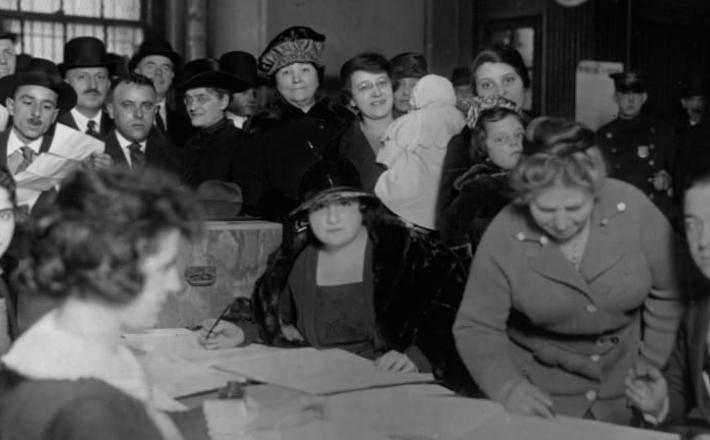How suffragists raced to secure women's right to vote ahead of the 1920 election
Source: History
The year 1917 was highly consequential for the suffrage movement. Having lost the chance to defeat the reelection of President Woodrow Wilson, who had initially been lukewarm toward suffrage, activists set their sights on securing voting rights for women by the 1920 presidential election.
One wing of activists began a daily picket of the White House, the first in American history. Another organized a lobbying campaign to win Congressional votes. Then, in April of that year, the United States entered World War I, and whatever political will that had been building for women’s enfranchisement evaporated.
Still, suffragists were not deterred. One of the most powerful weapons they had was the four million women already empowered to vote by their state constitutions. These women could cast ballots in all elections, up to the federal level, including for congressional representatives and for president. All of these “suffrage states” were still west of the Mississippi, but in November, suffragists won the richest state suffrage prize, New York.
Click here to read the full article published by History on 27 Mars 2020.

The year 1917 was highly consequential for the suffrage movement. Having lost the chance to defeat the reelection of President Woodrow Wilson, who had initially been lukewarm toward suffrage, activists set their sights on securing voting rights for women by the 1920 presidential election.
One wing of activists began a daily picket of the White House, the first in American history. Another organized a lobbying campaign to win Congressional votes. Then, in April of that year, the United States entered World War I, and whatever political will that had been building for women’s enfranchisement evaporated.
Still, suffragists were not deterred. One of the most powerful weapons they had was the four million women already empowered to vote by their state constitutions. These women could cast ballots in all elections, up to the federal level, including for congressional representatives and for president. All of these “suffrage states” were still west of the Mississippi, but in November, suffragists won the richest state suffrage prize, New York.
Click here to read the full article published by History on 27 Mars 2020.